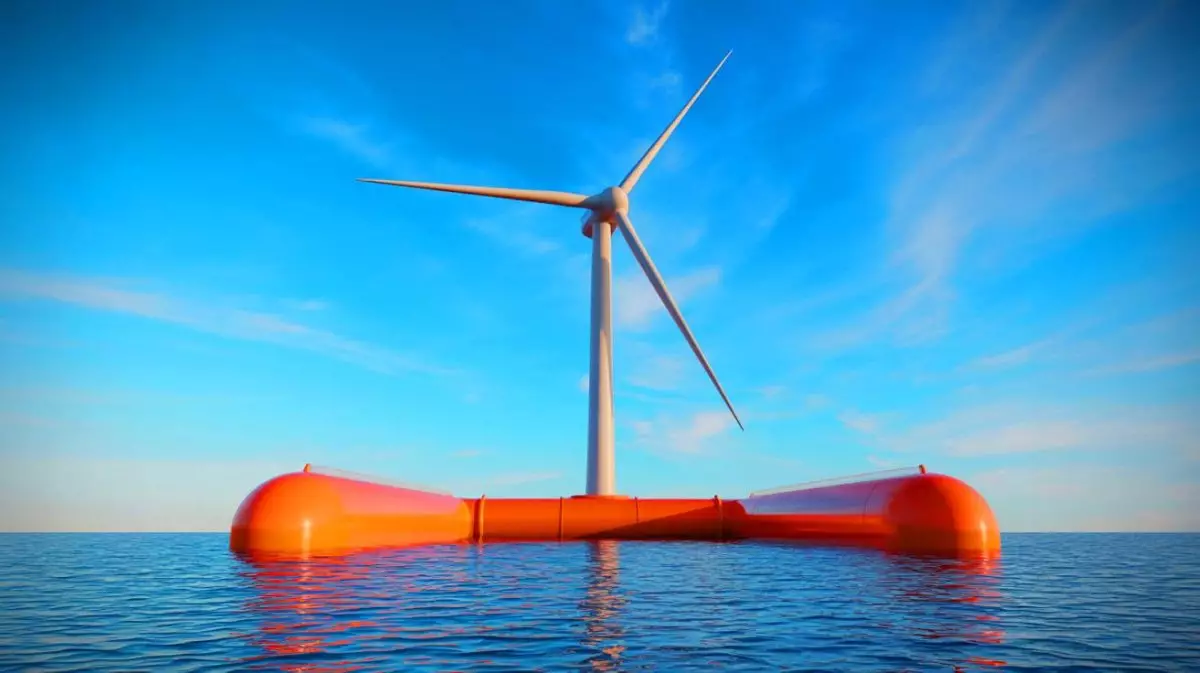| IN A NUTSHELL |
|
China has recently taken a monumental leap in renewable energy with the unveiling of the “Qihang,” the world’s largest floating wind turbine. Developed by the China Railway Construction Corporation (CRRC), this 20-megawatt turbine marks a significant advancement in the fight against climate change, with the capacity to save approximately 27,500 tons of coal and reduce carbon emissions by 68,500 tons annually. The Qihang is not just a testament to engineering prowess, but a signal of China’s commitment to sustainability and innovation. This development sets a new standard in the world of ultra-large offshore wind turbines and paves the way for future energy landscapes.
A Technological Marvel: The Largest Floating Wind Turbine
The “Qihang” turbine is a remarkable feat of renewable energy technology. Independently developed by CRRC, this 20-megawatt floating offshore wind turbine distinguishes itself with its immense size and capacity. With a rotor diameter of 853 feet, equivalent to seven football fields, it sets new benchmarks in scale and power. Its 495-foot hub further enhances its imposing stature, making it the largest floating wind turbine globally.
Beyond its size, the Qihang impresses with its performance capabilities. The massive blades rotate at a top speed comparable to high-speed trains, and a single rotation can power a household for 2 to 4 days. This underscores the turbine’s energy efficiency and its role in achieving ambitious environmental goals by conserving fossil resources and significantly cutting CO2 emissions.
In comparison, other prototypes like Envision Energy’s 16.7-megawatt and Dongfang Electric’s 18-megawatt models, which began testing in 2024, are outperformed by the Qihang. Even the uniquely V-shaped Mingyang Tiancheng at 16.6 megawatts doesn’t match this newcomer. This technological innovation race positions China at the forefront of the offshore wind sector, reinforcing its status as a global leader.
Overcoming Construction and Transportation Challenges
The construction and transportation of the Qihang turbine posed significant logistical and technical challenges. Manufactured in Sheyang, Jiangsu, in October 2024, the turbine was transported from Sheyang Port to Guangli Port in Dongying using a self-propelled modular transport unit. This complex process ensured the structural integrity and safe transport to the Shandong Dongying wind equipment testing and certification innovation base.
On January 11th, the turbine was installed at its test location, marking a new development phase. This crucial step is vital for validating the wind turbine’s performance in a dynamic marine environment. Engineers overcame various obstacles to ensure the Qihang’s stability, employing advanced control technologies and typhoon-resistance strategies. These innovations guarantee exceptional stability and minimal operational sway, even in extreme weather conditions.
The transport and installation process highlights the importance of modularity and component reusability in large-scale renewable energy projects. By integrating modular system interfaces and structural components, CRRC optimized the turbine’s flexibility and efficiency, paving the way for greater adaptability in future similar projects.
Environmental and Energy Impact
The environmental impact of the Qihang is substantial, reducing carbon emissions and contributing to the global energy transition. By conserving about 27,500 tons of coal annually, this wind turbine significantly cuts reliance on fossil fuels, a crucial goal in combating climate change. Additionally, the reduction of 68,500 tons of CO2 per year marks a major step towards a more sustainable future.
The development of the Qihang fits into China’s broader strategy to dominate the offshore wind sector. Having already surpassed the UK as the largest installed base, China aims to extend its influence in the international market, particularly in Europe. This ambition is backed by continuous investments in research and development, with the goal of creating ever more powerful and efficient energy solutions.
Moreover, the Qihang’s potential to contribute to clean energy production comes with significant economic benefits. By lowering fossil fuel import costs and creating new job opportunities in the renewable energy sector, this wind turbine represents a major asset for the Chinese economy. The Qihang thus symbolizes a step forward towards a more resilient and sustainable economic and energy model.
Innovation and Cutting-Edge Technology
The Qihang incorporates cutting-edge technologies that provide exceptional performance and adaptability to marine conditions. Equipped with over 200 test points covering every critical aspect of the turbine—from blades to transmission chains, towers, floaters, and mooring systems—these test points collect data on three-dimensional wind conditions, waves, and the floating platform’s six degrees of freedom responses, allowing for comprehensive performance analysis.
These technological advancements ensure not only increased energy production efficiency but also optimized turbine maintenance. With a design focused on component reusability and modularity, the Qihang benefits from enhanced flexibility and efficiency. It can quickly adapt to technological changes and global energy market demands.
The typhoon-resistant strategies implemented in the turbine’s design ensure exceptional stability, even in the most extreme weather conditions. These innovations allow the Qihang to operate optimally while minimizing risks to the environment and local infrastructure. The Qihang thus positions itself as a benchmark for future offshore wind turbines, combining technological innovation and environmental respect.
China’s unveiling of the Qihang represents a significant advancement in renewable energy, embodying the potential of technological innovation to transform our approach to energy production. As China continues to develop increasingly powerful and sustainable energy solutions, what impact will these advancements have on the global energy balance and efforts to combat climate change?
Did you like it? 4.4/5 (21)









Wow, 20 megawatts! That’s like having a supercharged hairdryer for the planet. 🌬️
How did they manage to transport this giant without breaking a sweat?
China is really blowing everyone away with this one! 😅
Interesting, but how does this compare in cost to traditional wind farms?
This is amazing! Thank you for sharing such groundbreaking news. 🌟
Is it really efficient to have something so massive floating around?
26,000 horsepower? My car feels so inadequate now. 🚗💨
Does this mean China will lower its coal consumption significantly?
I wonder if these will become tourist attractions. I’d visit! 🏖️
How do they handle maintenance on something so big?
Another Chinese innovation leaving the rest of the world in the dust. #Impressed